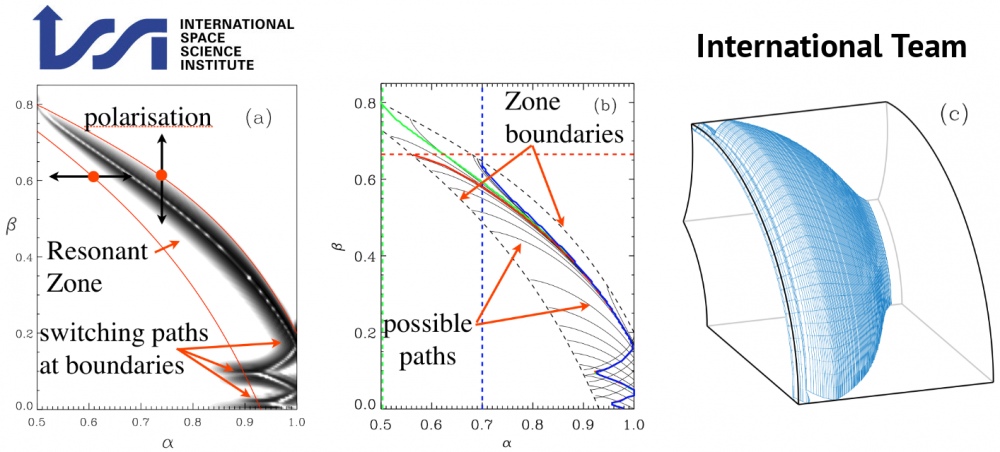The coupling of global fast MHD waves to resonant Alfvén waves in the Earth’s magnetosphere has been studied for over 4 decades (Southwood, 1974). The process has been used to explain observations in solar coronal loops (Goossens et al., 2002), other planetary magnetospheres (Mars, Jupiter and Saturn – Cramm et al., 1998; Glassmeier et al., 1989; Khurana and Kivelson, 1989; Russell, 1989) and even neutron star magnetospheres (Rezania and Samson, 2005). Alfvén waves play a key role in magnetosphere-ionosphere coupling and auroral processes, as well as particle acceleration (associated with strong field aligned currents) and transport of energy. Until recently the most sophisticated theory was 2D, so strictly only applied to, for example, axisymmetric magnetospheres. Recently three Team members have performed simulations of Alfvén resonances in 3D. The results are strikingly different to 2D theory, and are expected to catalyze a re-evaluation of resonant wave coupling in real life. For example, in 3D Alfvén resonances can cross L-shells and have a different polarization angle compared to 2D. Any non-axisymmetric planetary
magnetosphere can exhibit 3D Alfvén resonances. The Earth, with its variety of ground-based observations and satellite mission makes it the ideal setting to search for the first ever observation of a 3D Alfvén resonance. The search will focus on regions where the magnetosphere is most non-axisymmetric, either due to density plumes (in the afternoon) or field lines being distended due to the global convection cycle. There are many important applications of standing Alfvén waves, such as radiation belt particle interactions, ionospheric heating, auroral dynamics (Lessard et al., 1999; Mann et al., 2013; Degeling et al., 2018), which are beyond the scope of the present team. We will, however, demonstrate the efficacy of these ideas by
remote sensing of plasma density. Specifically, we shall focus on (i) identifying signatures of 3D Alfvén resonances in simulations, (ii) develop software to search for these in data sets, (iii) produce maps of 3D resonance properties to highlight the potential impact in related research areas, (iv) apply this knowledge to improve remote sensing of plasma density using 3D Alfvén waves and to understand the modification of Alfvén resonance signatures in ground magnetometer data by the overlying ionosphere.
The Identification And Classification Of 3D Alfvén Resonances
ISSI Team led by Andrew Wright (UK)
